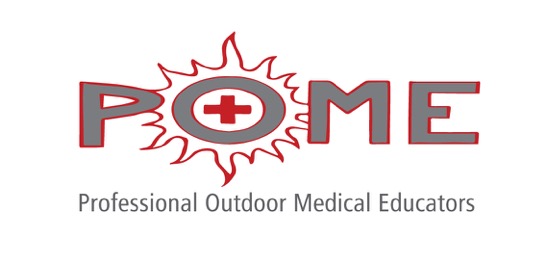The Wilderness Medicine Training Center was founded in 1997 by Paul Nicolazzo and incorporated in 2008 in Washington State. With over 35 years experience leading trips and training trip leaders to function safely in challenging environments, Paul started WMTC because he believed there was a better way to effectively educate people in wilderness medicine and outdoor program risk management. Over the years and under his direction, WMTC has proved this again and again as we continue to develop new teaching strategies, materials, and curricula for today's outdoor professionals. While we offer courses and ship supplies throughout the world, our office, warehouse, and classroom are located in the heart of the North Cascades near the small towns of Mazama and Winthrop in Washington State.
Educational Philosophy
Our medical courses are based on the following concepts:
We believe that a clear understanding of wilderness medicine is required for effective site management and should be a part of a required training progression for all outdoor leaders and administrators. That a wilderness medicine course should increase the student's awareness of the potential problems inherent in an outdoor program's course design and provide enough education and insight to prevent the majority of them. At the same time, it should teach the necessary assessment and treatment skill required to address the most severe problems should they arise.
We focus on providing practical instruction our students can understand, remember, and use. We strive to teach our students the information they will need to prevent, assess, and treat the most common injuries and illnesses they are likely to encounter in the outdoors as expedition medical officers, guides, trip leaders, or participants. Our print and digital field manuals provide an invaluable resource for students during and after the course.
We use a proprietary mechanism of injury/illness (MOI) approach to differential diagnosis that helps students sort through the patient's signs and symptoms to reach an accurate diagnosis. Field assessment is focused on making a distinction between those injuries and illnesses that may successfully be treated in the field and those that require an urgent, or non-urgent, evacuation. Most injuries and illnesses in a wilderness environment are a result of minor traumatic incidents, a lack of awareness surrounding environmental hazards, and the minor medical issues often encountered during long expeditions (and typically related to a lack of personal or group hygiene). There is a somewhat finite list of common traumatic and environmental problems each with their own clinical pattern making them significantly easier to prevent, assess, and treat—including evacuation—than many medical problems. As such, we present material according to the MOI: trauma, environmental, and medical. We recognize that students are unlikely to remember all the material presented—especially those associated with complex medical MOI—and have developed a waterproof, tear-resistant field manual and digital handbook (app) for their phone or tablet to assist them.
We teach normal anatomy and physiology before delving into the pathophysiology of each problem so that students gain a practical understanding of the problem and avoid a "grocery list" approach to assessment and treatment. To facilitate instruction in this area we utilize digital animations and a full-sized skeleton and anatomical torso. The animations allow us to describe complex concepts in physiology and pathophysiology in a manner students can understand and retain while the skeleton and torso permit students to develop a hands-on three dimensional understanding of the human body.
We use interactive case study reviews and realistic simulations to build skill mastery and critical thinking. Retention and judgment are directly related to field experience and field experience is acquired through a thorough after-response analysis of an incident. Medical professionals master their assessment and treatment skills via on-the-job training programs before acting on their own. For the majority of guides and trip leaders the experience and after incident analysis required for mastery must occur within the context of their course if it is to occur at all before they are required to act on their own. Therefore, we believe that an effective wilderness medicine course must contain enough case study review and simulation time to allow students to make, discuss, and learn from their mistakes under the practiced eye of an experienced instructor. Simulations in our WFR and WEMT courses are video-taped and later reviewed to enhance learning. Critical thinking saves lives. We teach critical thinking.
We base our medical curriculum on practice guidelines published by the Wilderness Medical Society and are signatories to the WFA, WAFA, and WFR scope of practice (SOP) documents; our director is part of the SOP writing group, the Wilderness Medicine Educator's Collaborative (WMEC). The WMEC consists of directors from the major wilderness medicine schools in the United States and assures that our students receive the most current peer-reviewed information.
We believe that outdoor leaders should be taught by professional outdoor leaders and educators with medical training and field experience rather than medical professionals with no professional—or minimal—outdoor leadership experience. Time spend outdoor leading both private and professional trips develops leadership and judgment; both essential to making sound medical and evacuation decisions.
We believe instructors should tailor the depth of anatomy, physiology, pathophysiology, and delivery methods to meet the specific needs of each class. We realize that students with varying academic abilities will require different levels of background anatomy, physiology, and pathophysiology. Instructor are trained to accommodate varying abilities and given minimum guidelines for each course and course topic. Simulation "stories" are built by combining the student's outdoor activities—as expressed during the course introduction—and real-life incidents, the actual environmental conditions during the course, and the site constraints.
